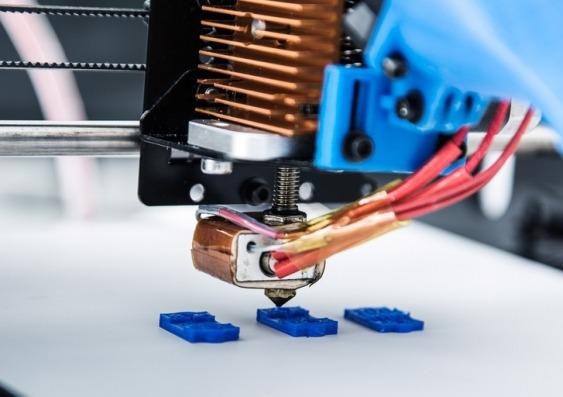Using only light, UNSW engineers have illustrated a new technique to enable 3D printed plastic to repair itself at room temperature.
 3D printed materials treated with a reversible addition fragmentation chain transfer (RAFT) agent have been shown to self-heal under UV lights. (Image Credit: Shutterstock).
3D printed materials treated with a reversible addition fragmentation chain transfer (RAFT) agent have been shown to self-heal under UV lights. (Image Credit: Shutterstock).
In the printing process, the inclusion of “special powder” to the liquid resin can later assist with making easy and quick repairs should the material break. This has been demonstrated by Professor Cyrille Boyer and his team, Dr. Nathaniel Corrigan and Mr. Michael Zhang, in the UNSW School of Chemical Engineering.
This can be easily achieved by just shining standard LED lights on the printed plastic for about one hour resulting in a chemical reaction and merging of the two broken pieces.
With this complete process, the repaired plastic becomes a lot stronger when compared to how it was before getting damaged. In the future, chemical waste can be reduced with additional development and commercialization of the technique.
This is possible because there is no need to discard broken plastic parts, or even recycle them, as they are likely to be repaired effortlessly even when they continue to be embedded in a component including several other materials.
The outcome of the team’s research is now present in the journal Angewandte Chemie International Edition.
Reducing Plastic Waste
In many places where you use a polymer material, you can use this technology. So, if a component fails, you can repair the material without having to throw it away. There is an obvious environmental benefit because you're not having to re-synthesize a brand-new material every time it gets broken. We are increasing the lifespan of these materials, which is going to reduce plastic waste.
Dr. Nathaniel Corrigan, Study Researcher and Engineer, School of Chemical Engineering, UNSW
A trithiocarbonate, referred to as a reversible addition fragmentation chain transfer (RAFT) agent, was used as the powdered additive by the team. Initially created by CSIRO, the RAFT agent helps to reorder the nanoscopic network of elements that make up the material and permits the broken pieces to be fused.
This happens within almost 30 minutes when UV LED lights are made to shine directly onto the broken plastic. After nearly 1 hour, the full healing takes place.
Experiments, even on a 3D printed violin, demonstrate that the self-repaired plastic’s strength is completely recovered when compared to its initial unbroken state.
The team stated that commercialization of the process is achievable considering the speed and simplification of their system in comparison to the current techniques used for repairing broken 3D printed materials.
There are other processes that do this, but they rely on thermal chemistry to repair the material and typically it takes around 24 hours and multiple heating cycles to achieve the same type of result. Another restriction to that is that you need an oven which is heated to high temperature and you obviously cannot repair the plastic material in situ – you would need to disassemble it from the component first which adds a level of complexity and delay.
Dr. Nathaniel Corrigan, Study Researcher and Engineer, School of Chemical Engineering, UNSW
“With our system, you can leave the broken plastic in place and shine the light on the entire component. Only the additives at the surface of the material are affected, so it’s easier and also speeds up the entire process,” Dr. Corrigan added.
According to Professor Boyer, the new technology could possibly be used in a variety of applications where innovative 3D printed materials are presently used in high-tech specialized components. These include sensors and wearable electronics, as well as some shoe manufacturing.
Journal Reference:
Zhang, Z., et al. (2021) A Photoinduced Dual-Wavelength Approach for 3D Printing and Self-Healing of Thermosetting Materials. Angewandte Chemie International Edition. doi.org/10.1002/anie.202114111.